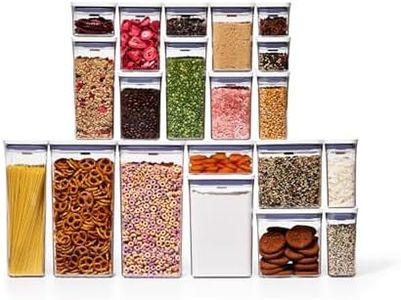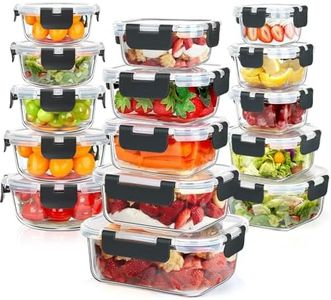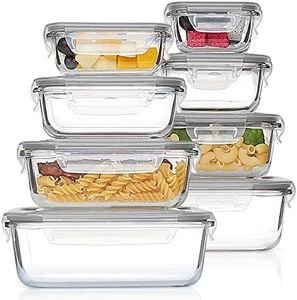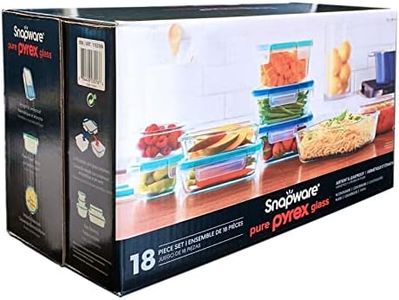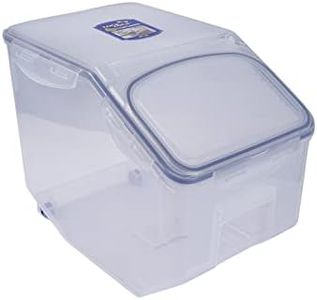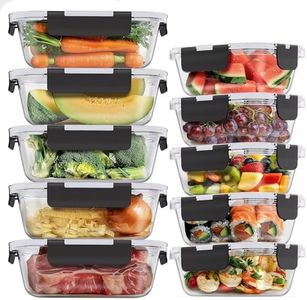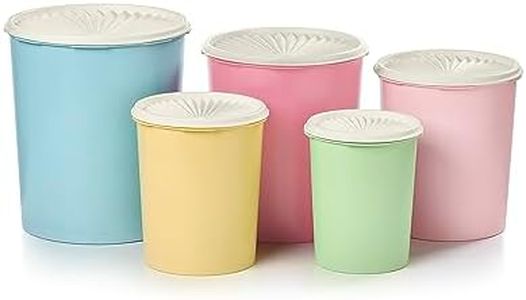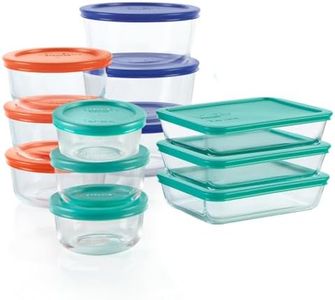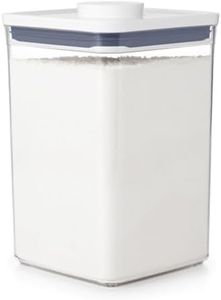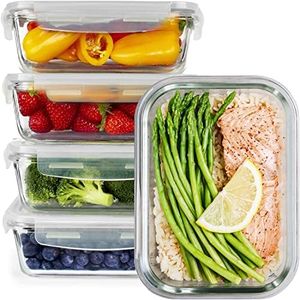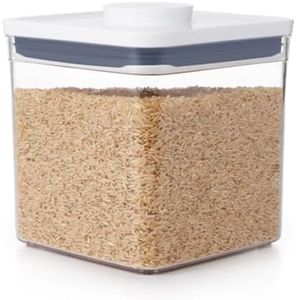We Use CookiesWe use cookies to enhance the security, performance,
functionality and for analytical and promotional activities. By continuing to browse this site you
are agreeing to our privacy policy
10 Best Food Safe Containers
From leading brands and best sellers available on the web.Buying Guide for the Best Food Safe Containers
When choosing food-safe containers, it's important to focus on how the container will keep your food fresh, safe, and easy to handle. The right container depends on what you are storing, how often you use it, and where you plan to keep it—whether that's in the fridge, freezer, or pantry. Durability, ease of cleaning, and the safety of the materials should be your top considerations. By understanding a few key features, you can pick a container that fits your storage needs and keeps your food safe.Material SafetyMaterial safety refers to what the container is made of and whether it's suitable for direct contact with food. Common food-safe materials include certain plastics, glass, and stainless steel. It's important because some materials can leach harmful chemicals into food, especially when heated or used for acidic foods. Usually, look for containers labeled BPA-free or explicitly rated as 'food grade.' If you will be using the container for microwaving or storing acidic foods, glass or stainless steel is often safer, while certain plastics are best for dry goods. Depending on your needs, always check for symbols or markings that indicate food safety.
Seal / Lid QualityThe seal or quality of the lid relates to how well the container closes and keeps air out. A good seal helps maintain freshness and prevent leaks, which is especially important for liquids or moist foods. Some lids have snap locks, while others simply press on. If you store soups or sauces, opt for containers with tight, leak-proof lids. For dry goods, a simple snap or twist lid may be enough. Think about how often you need to open and close the container—a more secure seal is helpful for longer storage, while easier-to-open lids are convenient for frequent use.
Size and ShapeSize and shape affect how much food you can store and how efficiently the containers fit in your storage space. Larger containers work well for bulk goods like flour or leftovers, while smaller sizes are ideal for snacks and packed lunches. Square or rectangular shapes often save space compared to round ones. Consider what types of foods you store most and choose sizes that match typical portions. Stackable shapes can help keep shelves organized if you need to maximize space.
Temperature ResistanceTemperature resistance determines whether the container can safely be used in the microwave, freezer, or dishwasher. This is important for convenience and safety, since some materials warp or release chemicals when exposed to heat. If you reheat leftovers, look for containers marked microwave-safe. If you freeze meals, check for a snowflake symbol or freezer-safe note. For the easiest cleaning, dishwasher-safe containers make cleanup simple. Match your pick to where you'll be using the container most often.
Ease of CleaningEase of cleaning is about how easy it is to wash the container and keep it hygienic. Containers with corners or complex lids may trap food and be harder to clean by hand. Glass and some plastics rinse easily, while those with many parts or seals might require more effort. If you wash containers frequently or want to avoid lingering smells, pick one with smooth surfaces and that is safe for the dishwasher.
Stain and Odor ResistanceThis quality describes how well the container avoids absorbing smells and colors from foods, which is especially relevant when storing items like tomato sauce or strong spices. Glass generally resists stains and odors best, while some plastics may discolor or retain smells after repeated use. If you often store strongly colored or scented foods, prioritize materials and features that resist staining and odors, so your containers remain fresh and pleasant to use.
